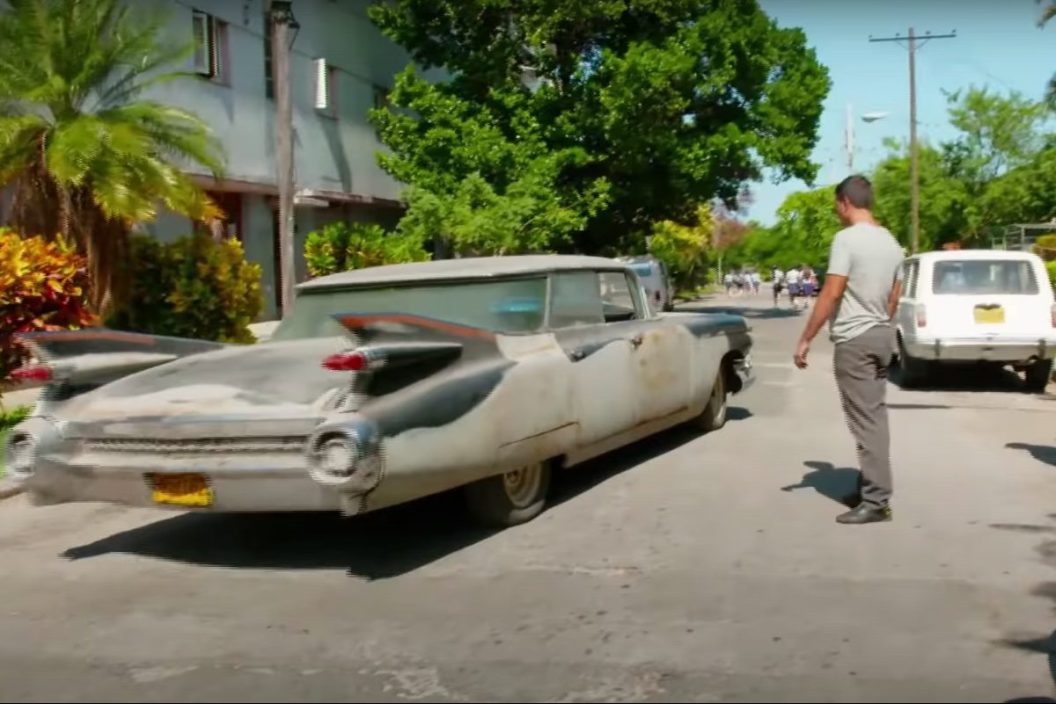Ricardo of Cuban Chrome fame has seen a lot of tough projects, but this 1959 Cadillac, owned by his buddy Ignacio, is particularly memorable. Of all the problems it could have, it just won't start. Even better, it's inconveniently located in Ignacio's garage, tailfins covered with dust.
It's truly a sad sight to behold. Once upon a time, 1959 Cadillacs such as this one were used in Cuba as protocol vehicles, shuttling foreign dignitaries and important people when it was brand new. In fact, Cuba had more Cadillacs per capita than in the U.S. But, with the Cuban Revolution and resulting embargo, American cars were seized, many of them to disappear over the years.
You might not expect it from a 1959 model car, but these Caddys had it all: Power steering, power brakes, power windows, power adjustable seats...the works.
Let's dive deeper into the magic of the 1959 Cadillac, the vehicle of a different time, a different place, and a wildly different body style.
General Motors Presents: The 1959 Cadillac
If there's one thing that stands out about the 1959 model year, it's that all models, with the exception of the 1959 Cadillac Fleetwood Seventy-Five sedan, measured 225 inches in length. That's 18 and three-quarter feet, if you were wondering. And, the Seventy-Five? 244.8 inches. No big deal. Go ahead and parallel park it anywhere.
The models offered in this magical year included the 1959 Cadillac Fleetwood Sixty Special and Seventy-Five, the Series Sixty-Two, which was offered as a hardtop coupe, sedan, or convertible, the Eldorado Brougham, Eldorado Seville, and Eldorado Biarritz variations, as well as a Sedan DeVille and Coupe DeVille.
You might be forgiven for mixing up the various models, as the styling was extraordinarily similar between Cadillac models. The category was "extreme curvy elegance," and the body style reflected it. Enormous sculpted tailfins were punctuated with rocket-like bullet tail lights. The chrome divider bar split the grille into two sections, and the hood, bumper, and fenders were given a liquid, curved flow. Even the windshield and rear window were curved.
The 1959 Cadillac Fleetwood
Technically speaking, the 1959 Fleetwood was known as either a Sixty Special or a Seventy-Five, depending on the model selected. The history of the Fleetwood nameplate is its own lengthy story, involving a lot of switcheroos, twists, and turns.
The Sixty Special stood out with its dummy air scoop on the rear fender, and the chromed-up tail lights. In fact, Cadillac took every opportunity to put chrome on this particular model.
If you happened to need seating for up to nine elite passengers, the Seventy-Five limousine model was the way to go. Not only did it meet and exceed Cadillac's self-proclaimed "Standard of the World," but it was a limo. With tailfins. Now that's traveling in style.
The 1959 Cadillac Series 62
Prior to 1959, the Series 62 models were known as Series 6200, and included the Eldorado and DeVille models. With the 1959 model year, Series 62 was finally able to stand alone.
Under the hood was a 6.4L V8 engine, which provided 352 horsepower. Paired with an automatic transmission, and standard equipment like power brakes, power steering, vanity mirror, and two-speed windshield wipers, it was more advanced than some of the cars we drove in the 1980s. The Cadillac Series 62 convertible stepped it up with power adjustable seats and power windows. Those who chose the hardtop sedan also had a choice between a four-window and a six-window model.
The 1959 Cadillac Eldorado
The name "Eldorado" refers to the golden standard by which these luxury cars were created.
The Eldorado Brougham topped the Cadillac line, bested only by the Series 75 limousine. It was absolutely resplendent, even by our modern standards, with air conditioning, cruise control, and dimming headlamps. Plus, it was built by hand in Italy.
Those looking for a convertible version would prefer the Eldorado Biarritz. In fact, if you were to picture a "pink Cadillac" right now, you would probably involuntarily dream up an Eldorado Biarritz, even though it was available in roughly 20 different paint jobs.
The Eldorado Seville, therefore, was the hardtop version, though it was hardly plain or ordinary. All Eldorado models featured a 4-speed Hydra-matic automatic transmission, six-way power seats, power door locks, air suspension, and a "scientifically designed" drainage system. The jewel-textured front and rear grille were designed to provide a similar powerful view coming and going.
The 1959 Cadillac DeVille
You could tell which models were DeVilles by the script lettering on the skirted rear fenders. The name, of course, was a nod to the French "coupe de ville," which was originally a two-seater, two-door carriage.
While the Cadillac Coupe DeVille was still a two-door affair, a Sedan DeVille joined the lineup. Both four- and six-window versions were available. The 1959 model year was the first year the DeVille was offered as its own line, and promptly sold over 53,000 units, which was over a third of all Cadillac sales for the year.
Classic cars like the 1959 Cadillac lineup can be hard to find, and even harder to restore. If your journeys happen to take you to Cuba, for example, you're likely to find plenty of aged Caddys with the impeccable styling and tailfins to the moon. They may not start, of course, but that's what the restoration process is for. They just need a little love to bring them back to the Standard of the World.
